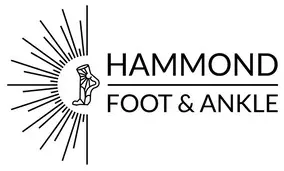
You don’t have to put up with persistent heel pain. If you haven’t managed to get relief with initial treatment measures, a podiatry specialist can discuss more advanced options to ease your heel pain.
Chronic heel pain is more than a nuisance; it can impact your mobility and ability to perform your regular daily activities. While conservative treatments like rest, ice, compression, and elevation (RICE) often provide relief, they aren’t always enough to quell persistent heel pain.Â
If you’ve tried conservative measures without success, scheduling a visit with a foot and ankle specialist is a wise next step. Here at Hammond Foot and Ankle, podiatrist Dr. Jeffrey Hammond specializes in diagnosing and treating a full spectrum of issues that affect the foot and ankle.Â
Heel pain is common and often resolves with rest and home care. However, when heel pain fails to resolve with initial approaches, there are more advanced treatments available to help you get relief.ÂÂ
Corticosteroid injections
For persistent heel pain, corticosteroid injections may offer relief. These injections deliver powerful anti-inflammatory medication directly into the affected area, providing significant pain reduction and decreasing inflammation.
Platelet-rich plasma injections
An innovative treatment, platelet-rich plasma (PRP) therapy harnesses the healing potential of your own blood. A small sample of your blood is processed to concentrate the platelets, which are then injected into the painful heel area to relieve pain. Platelets contain growth factors that stimulate tissue repair and the growth of new tissue.Â
PRP injections can address heel pain by addressing the underlying causes of tissue damage and inflammation. This treatment is gaining popularity for its ability to expedite recovery and its relatively low risk profile.
MLS laser treatment
Multiwave locked system (MLS) laser therapy is designed to simultaneously address the root of heel pain and inflammation. MLS technology delivers controlled therapeutic laser energy that produces anti-inflammatory and analgesic effects.
The laser penetrates deep into the skin, where it stimulates your body’s natural healing process. The ability of the laser to penetrate deeper into tissues than other therapies sets it apart. The laser energy increases circulation to damaged tissues, and produces a metabolic reaction that accelerates tissue repair and cell growth. This makes it an excellent noninvasive option to reduce heel pain and help heal plantar fasciitis.
Custom orthotic devices
The advancement in custom orthotic devices makes them worth mentioning. Tailor-made to fit your feet, custom orthotics can provide superior support and alignment.
If your heel pain stems from biomechanical issues, such as flat feet or overpronation, custom orthotics may offer effective long-term relief.
Minimally invasive surgery
When nonsurgical treatments fail to provide relief, you may be a candidate for minimally invasive surgery. Techniques like endoscopic plantar fasciotomy or minimally invasive achilles tendon repair are designed to address the structural problems causing heel pain with smaller incisions, reduced recovery time, and a lower risk of complications.
Living with unresolved heel pain can be both frustrating and debilitating. However, the advancement in podiatry means that you have a multitude of solutions available to help relieve your heel pain.
If you’re dealing with persistent heel pain that hasn’t responded to self care, it’s time to discuss the next step in finding an effective solution. Reach out to us at our Provo, Utah, office to schedule a visit with Dr. Hammond.
